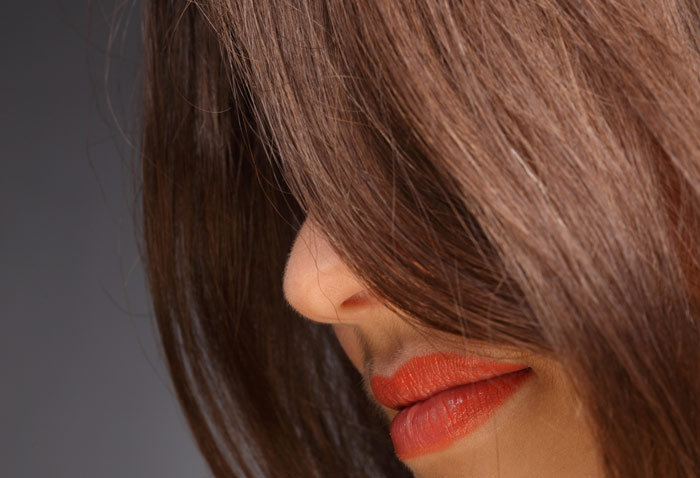Hair loss is an unpredictable and often distressing process that varies from one individual to another. With some hair begins to fall as they get past 20, and their hairline recedes with each passing year, others manage to keep their hair into a mellow age and continue visiting a hairdresser.

Too Many Male Sex Hormones in Women Cause Hair Fall
Baldness, or alopecia, can be brought about by different reasons (scientists discovered at least eight) all requiring different treatment.
In men hair fall is often the result of the activity of male sex hormone testosterone that is to be blamed for bald patches in every third male. The hair of 30% of men reacts to a testosterone variety known as DNT; it affects men starting from age 30 when many begin shedding their hair, but it can also set off the process as late as at 60. Three kinds of treatment can be administered to curb hair loss.
Hormonal Hair Fall Treatment
First, there are certain hormones that interfere with the generation of DNT; but this treatment can prove efficacious only if you keep suppressing DNT on a regular basis for years on end. Furthermore, other influences of this kind of long-term inhibition on the human body are not yet fully investigated.
Hair Transplantation
Second, you can have your hair transplanted from any place on your head or on your body onto the spots where your hair is getting thin.
Hair Loss Treatment with Minoxidil
And finally, balding places can be treated with minoxidil-containing medications that stimulate blood circulation, thus strengthening hair follicles and preventing hair from falling out. Once again, this course of treatment requires a long time span and is ineffective in individuals who are completely bald.
How Stress Affects Your Head of Hair

Another frequent cause of hair loss is stress. A prolonged exposure to stress or pressure or/and a shocking experience are believed to lead to hair fallout within several months after the exposure. That may be one of the results of an increase in the levels of testosterone and noradrenalin following a stressful event, to which the medulla of the adrenaline gland reacts producing a more active secretion. This condition can usually be diagnosed through an examination of the scalp. Alopecia developing as a result of stress can be brought down with vitamins and mineral salts. Psychotherapy has also been known to help inhibit hair fall in those cases.
Pregnancy and Postpartum Hair Loss
In women alopecia can be triggered off by pregnancy. During pregnancy, when the level of female sex hormone estrogen peaks, a number of women grow luxuriant manes of hair that are, unfortunately, doomed. Within a few years after their child is born the estrogen level drops to its normal notch, and the hair comes off.
How to Treat Postpartum Hair Loss
It’s a natural process, hair usually regains its previous appearance, and the woman has no cause for worrying. Even if hair loss is greater than it was expected, it’s still a customary effect of pregnancy, and hair will normally grow again in a matter of half a year or 8 months. To ensure the regrowth women can take vitamins containing iron, calcium and magnesium, as well as vitamin B6.
Thyroid Gland Problem
The thyroid gland may be the culprit in certain cases of alopecia when it has been influenced into hyperactivity or shows symptoms of malfunction. Hormonal therapy can soon put it right.
What Is Alopecia Areata?

Baldness that affects only certain spots on the head is called alopecia areata and is considered to be an autoimmune disease. For some reason the body regards hair follicles as alien bodies and prevents them from putting out hairs. Steroid injections or creams is a common prescription in these cases; once again the treatment can spread over a number of months.
Androgenic Alopecia in Women
Common men’s baldness brought about by the activity of DNT is similar to the so-called androgenetic alopecia in women, when they begin to shed hair because DHT gets more active in their bodies. It usually affects women within the age range of 18 to 44 and is believed to be connected with the ageing process. Generally androgenetic alopecia does not deprive females of all of their hair, it just gets thinner, wider at the partings, and a bald pate appears or gets more pronounced. The same measures are recommended for women as for men.
Menopause and Hair Loss in Women
As women approach the menopause period, their ovarian functions decline, the secretion of female sex hormones drops considerably, which leads to many changes in the body and mind. Physical and emotional changes may cause extensive hair fallout. Hormone therapy may prove a sufficient answer to menopause-following baldness.
How Chemotherapy Affects Hair Growth
When a person is undergoing chemotherapy or radiotherapy he or she may find that hair growth is inhibited and hair loss ensues. Yet chemotherapy patients usually regain their hair as soon as they are through with the treatment. Unless the scalp is directly affected by radiation beams during therapeutic radiology, these individuals have nothing to worry about.










